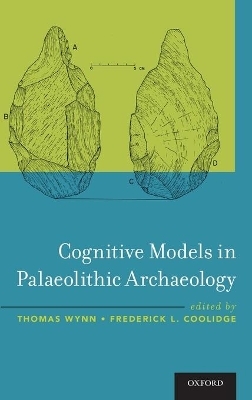
Cognitive Models in Palaeolithic Archaeology
Oxford University Press Inc (Verlag)
978-0-19-020411-2 (ISBN)
How did human thought evolve into the highly complex process it is today? In the field of evolutionary cognitive archaeology, cognitive science and archaeology intersect to provide a more complete and grounded picture of the mind. With the combination of cognitive theories and archaeological evidence, this burgeoning field is only beginning to tap into the potential for a better understanding of the development of specific cognitive abilities.
Cognitive Models in Palaeolithic Archaeology explores hominin cognitive development by applying formal cognitive models to analyze prehistoric remains from the entire range of the Palaeolithic, from the earliest stone tools 3.3 million years ago to artistic developments that emerged 50,000 years ago. Several different cognitive models are presented, including expert cognition, information processing, material engagement theory, embodied/extended cognition, neuroaesthetics, visual resonance theory, theory of mind, and neuronal recycling. By examining archaeological remains, and thereby past activities and behavior, through the grounded lenses of these models, a mosaic pattern of human cognitive evolution emerges. This volume, authored by many leading authorities in the field of cognitive archaeology, will attract scholars and students of cognitive evolution and paleoanthropology, who will find a new understanding of hominin cognitive evolution and substantive conclusions about our hominin evolution as opportunities for further research.
Thomas Wynn, PhD, is Distinguished Professor of Anthropology at the University of Colorado, Colorado Springs. He has published extensively in Palaeolithic archaeology, with a particular emphasis on cognitive evolution. Frederick L. Coolidge, PhD, is Professor of Psychology at the University of Colorado, Colorado Springs. He focuses primarily on behavioral genetics, paleopsychology, and personality disorders across the lifespan. Both editors are well-known in paleoanthropology as advocates of the enhanced working memory hypothesis for recent cognitive evolution. In 2012, they co-founded the UCCS Center for Cognitive Archaeology. They have also published numerous articles and two books together: The Rise of Homo sapiens: The Evolution of Modern Thinking (2009) and How To Think Like a Neandertal (OUP 2012).
Preface
1. Evolutionary Cognitive Archaeology
2. The Expert Cognition Model in Human Evolutionary Studies
3. Towards a richer theoretical scaffolding for interpreting archaeological evidence concerning cognitive evolution
4. Material Engagement and the Embodied Mind
5. Materiality and Numerical Cognition: A Material Engagement Theory Perspective
6. Art without Symbolic Mind: Embodied Cognition and the Origins of Visual Artistic Behavior
7. Deciphering Patterns in the Archaeology of South Africa: The Neurovisual Resonance Theory
8. Accessing hominin cognition: language and social signaling in the Lower to Middle Palaeolithic
9. Bootstrapping Ordinal Thinking
10. Models, Puddings and the Puzzle
Index
| Erscheinungsdatum | 10.12.2016 |
|---|---|
| Verlagsort | New York |
| Sprache | englisch |
| Maße | 236 x 157 mm |
| Gewicht | 476 g |
| Themenwelt | Geisteswissenschaften ► Archäologie |
| Geschichte ► Allgemeine Geschichte ► Vor- und Frühgeschichte | |
| Geisteswissenschaften ► Psychologie ► Allgemeine Psychologie | |
| Geisteswissenschaften ► Psychologie ► Verhaltenstherapie | |
| Studium ► 1. Studienabschnitt (Vorklinik) ► Histologie / Embryologie | |
| ISBN-10 | 0-19-020411-7 / 0190204117 |
| ISBN-13 | 978-0-19-020411-2 / 9780190204112 |
| Zustand | Neuware |
| Haben Sie eine Frage zum Produkt? |
aus dem Bereich


